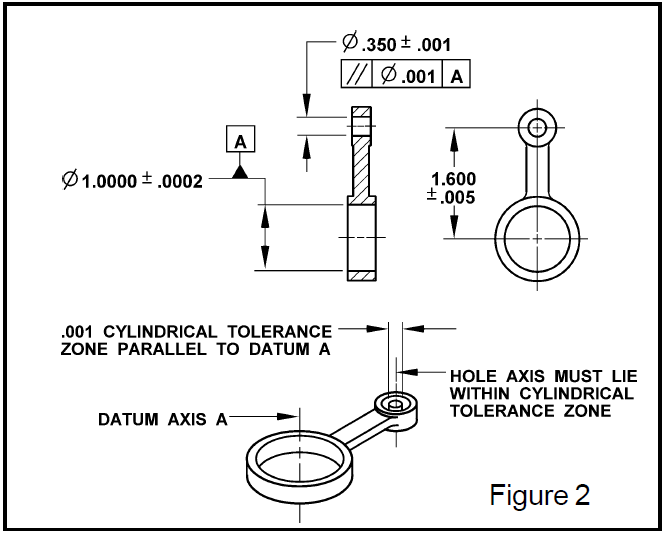The GD&T Application Guideline is a regular feature of the
GD&T Rag newsletter. Each GD&T Application Guide topic focuses on a different GD&T symbol, to provide a quick reference on the definition, tolerance zone shape, symbol requirements, and exceptions of that symbol.
GD&T Parallelism
Definition:
Parallelism is the condition of a surface or center plane, equidistant at all points from a datum plane; or an axis,equidistant along its length from one or more datum planes or a datum axis. (ASME Y14.5M-1994, 6.6.3)
Tolerance Zone Shape:
A parallelism tolerance may specify:
- a tolerance zone defined by two parallel planes parallel to a datum plane or axis, within which the surface or center plane of the considered feature must lie (See Figure 1).
- a tolerance zone defined by two parallel planes parallel to a datum plane or axis, within which the axis of the considered feature must lie.
- a cylindrical tolerance zone parallel to one or more datum planes or a datum axis, within which the axis of the features must lie (See Figure 2).
Uses:
Parallelism is one of three controls used to control the orientation of features (Parallelism, Perpendicularity, and Angularity). Parallelism, when used with a surface, will also control the flatness and surface straightness of that plane.
Requirements:
- A parallelism feature control frame may be applied to a surface or a feature of size depending on its intended use. When used on a surface, the feature control frame may point to the surface using an arrow or dot, or it may be attached to an extension line. For a feature of size, it may be placed with a size dimension. (See Figure 3).
- Normally a parallelism feature control frame contains only one datum reference, but in some cases a secondary datum reference may be used to orient the tolerance zone relative to a secondary datum. More than two datum references are generally not used with parallelism control.
- The tangent plane symbol may be used with a parallelism callout; the tangent plane symbol requires that the plane defined by the high extremities of a surface be parallel to a specified datum.
- The Envelope Rule does not apply to interrelationships between features, only individual features of size. The Envelope Rule requires that a feature of size may not exceed its MMC boundary envelope.However, In the case of a width or thickness dimension, the Envelope Rule does impose a parallelism requirement; the tolerance in a parallelism feature control frame cannot exceed the size tolerance value.


